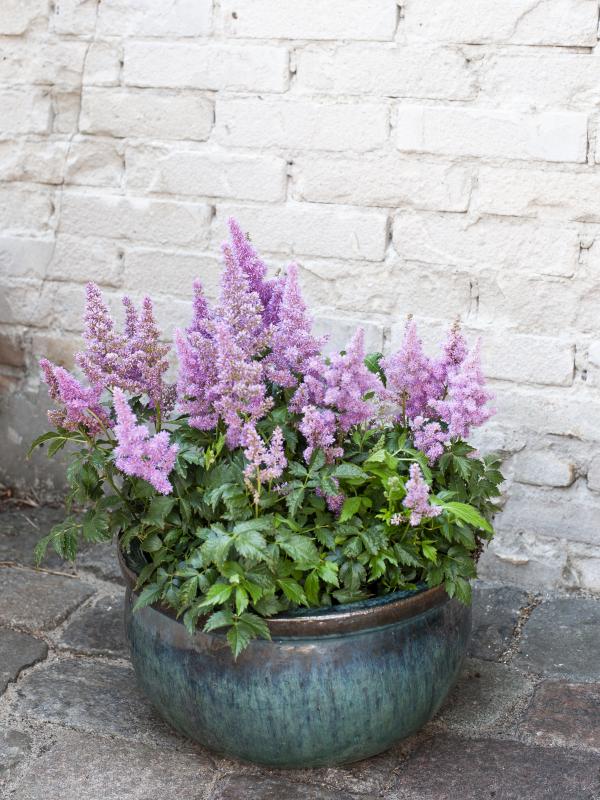When the rest of the garden is starting to look a bit tired, Astilbe is still a sassy showgirl who can shake things up a bit. The plant has deeply incised green leaves that turn caramel-coloured in autumn. They retain this shade throughout the winter to bring some colour to the garden.
 Waving plumes
Waving plumes

Astilbe flowers with fabulous plumes, that can be white, yellow and pale pink, but also lilac, bright pink, red and purple, depending on the variety. When they’ve finished blooming, the plumes still look decorative: leave them in place and they will look beautiful in the winter with some rime or snow on them. And in the spring they will make excellent nesting material for birds. There are Astilbes that only reach a height of 25 cm, but also some that grow to 70-100 cm. Place them in groups to achieve the optimum effect of colourful plumes waving in the wind.
Tiny seeds
Herbaceous Astilbe is a member of the saxifrage family and grows in mountainous regions and on the edge of woodland in Asia and North America. There are 14 known species. The plant came to Europe at the end of the 18th century. Most of our present-day Astilbes originate from the greenhouse of German grower George Arends (1862-1952), who bred them. That was quite a challenge, because Astilbe's seeds are very small - the size of a speck of dust.
Astilbe trivia
• Astilbe is very popular in South Korea, where entire gardens are devoted to it.
• In the symbolism of plants the soft plumes say ‘I will wait for you’.
• Every region has its own favourites. Yellow, coral and red Astilbes are popular in the Far East, whilst the white, pink and purple varieties are more popular in the West.



